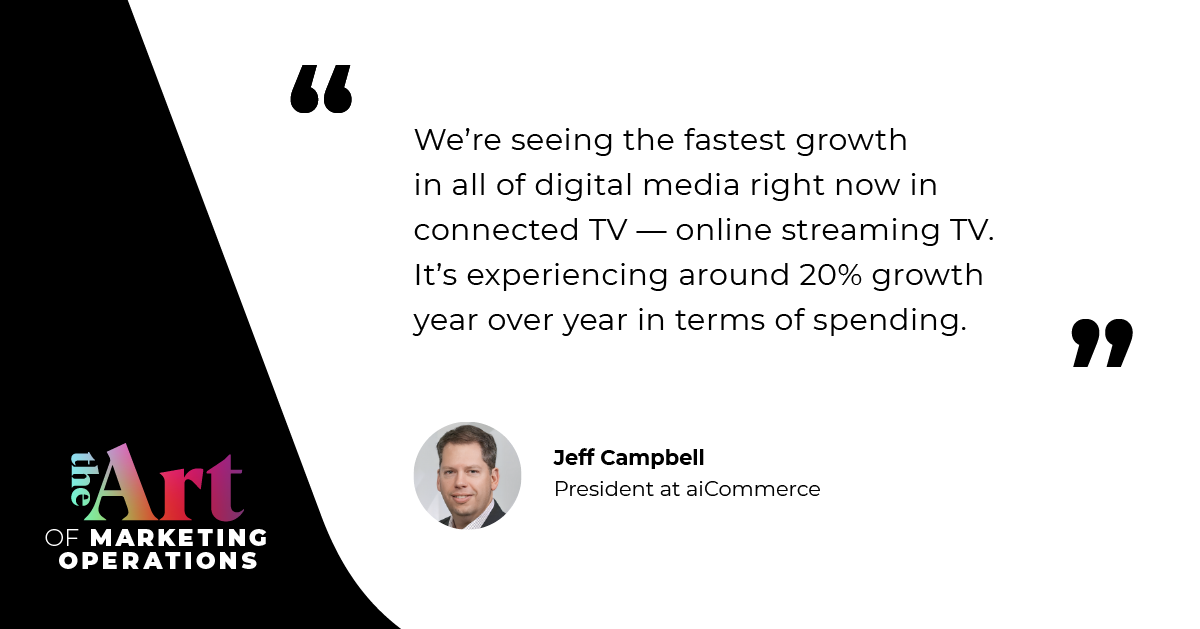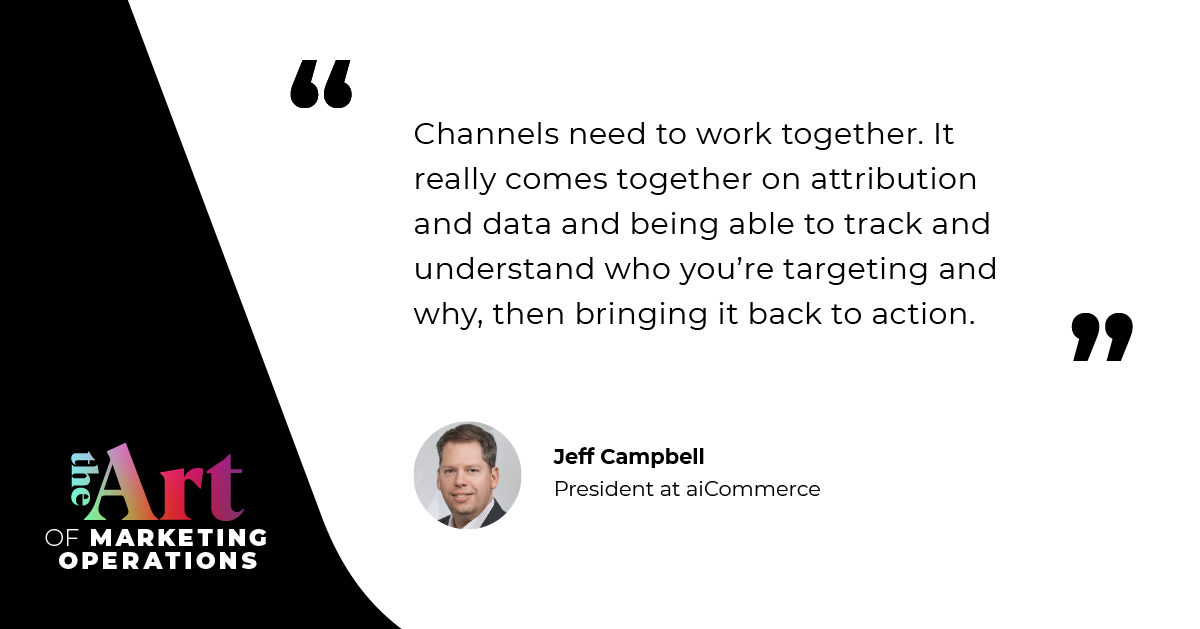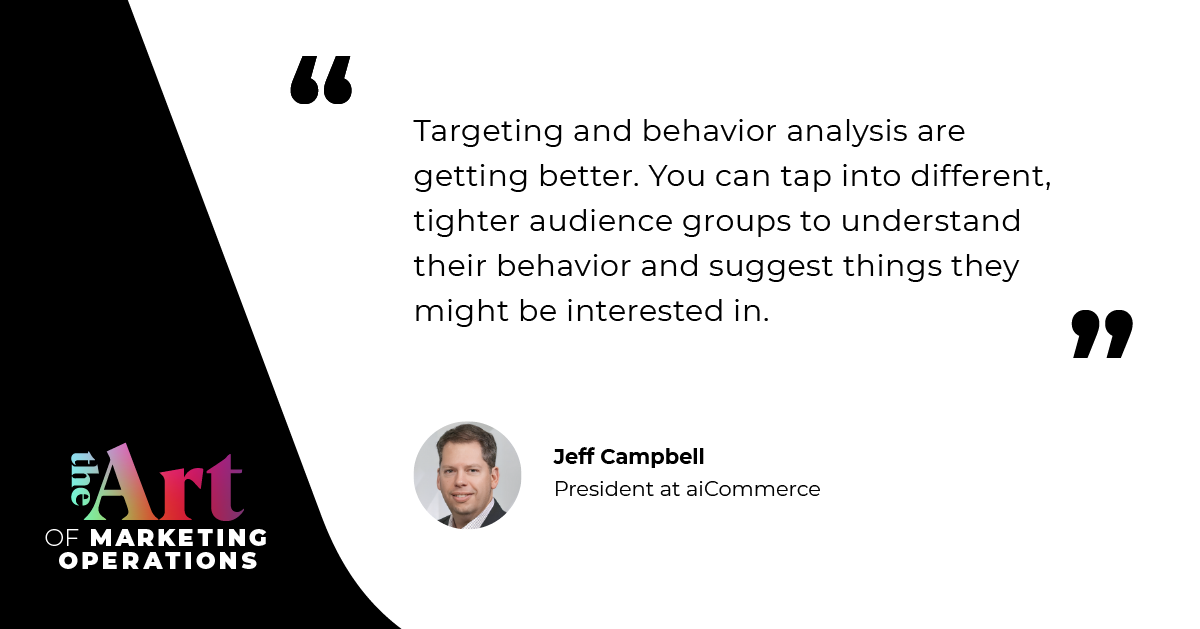The landscape of digital marketing is constantly evolving, with both consumer preferences and business offerings widely changing every year.
With Generation Z taking up more and more of the consumer audience each year, brands need to focus on meeting their expectations in both their marketing and their sales platforms.
Jeff Campbell, President at aiCommerce, joins us again to discuss marketing diversification, the new opportunities from social commerce, cross-channel collaboration for data utilization, what brands should expect this holiday season after last year’s post-Covid boom and more.
Customers of both Gen Z and older generations are displaying a heightened emphasis on data security and privacy while also leaning heavily toward convenience. This is the cue for social commerce to take the cake (we are looking at you, TikTok Shop). Brands must adapt now to stay relevant and profitable.
Social commerce’s new opportunities for consumers and brands

People have stopped using Google for shopping research, and they have stopped buying directly from brand’s websites. With a consumer base that has grown accustomed to Amazon’s ease of use, entering payment information and navigating return policies on individual brand websites has become a chore that is likely to be avoided.
Instead, today’s consumer is going to social media sites like TikTok and YouTube and TV streaming services to find their next purchase. Through the added boost of algorithms, consumers are watching videos about the topics that interest them — and those same videos are successfully creating marketing campaigns that sell.
Consumers are becoming more hesitant to enter their personal information such as their credit card number and email address into a multitude of digital locations out of a fear of security risks and spam. Focused on privacy and convenience, using secure third-party payment processors to buy products with a single click on TikTok Shop has been all the rage.
Brands are rushing to the scene of a new potential avenue for diversification. After all, 56% of all US brands use more than five retail media networks, and 16% use more than ten according to the Association of National Advertisers.
With TikTok opening their own fulfillment center, they are following Amazon in playing the logistics game. This is opening up new opportunities for brands to make partnerships with influencers, and deliver on their lucrative promises.

No more middlemen for influencer marketing
According to the eMarketer forecast, TikTok is the number two app in terms of minutes used. Not only that, but they are projected to be the number one app, trumping Meta’s Facebook by the year 2025. Additionally, brands are now spending more on social media influencer engagement than traditional social media ads, making the influencer space the way of the future.
The extreme popularity is coupled with an opportunity to speak directly with niche influencers to push products. With their new paid search option, brands can enjoy the benefits of being the top talk of any given topic.
“If you are really interested in pickleball, you can search the topic on TikTok. Then, you are presented with an advertisement for paddles, with the easy option of clicking a button to purchase them,” Jeff says.
Data privacy regulation for social commerce platforms
TikTok’s recent heated debate has left some users (and consumers) concerned about the social media giant. Yet, Jeff believes the hype is solely due to their Chinese ownership, and US based companies should be held under the same scrutiny.
“There are many companies in the US that are doing much worse with our data than TikTok,” Jeff says.
The solution? Across the board data security reform for all companies of every country coming straight down from Washington.
Following the funnel: attribution through data

“Is your phone listening to you or is behavioral analysis getting better?” Jeff says.
With Amazon’s success through their Thursday Night Football ads including QR codes, brands should be considering cross-channel usership as their top priority.
With channels working together in an open-loop system, consumer information can be utilized to make sales — regardless of where they actually swipe or enter their card information.
Closed-loop systems are withholding data from their competitors — and rightfully so for the sake of market control. Yet, utilizing data from every available channel is key to profitability.
Interested in learning more? In our conversation with Jeff, we discuss the new social commerce channels and the opportunities they bring, the added value of being part of the first wave of brands utilizing social commerce, what the holiday season holds for retail and more. Listen on Apple Podcasts, Spotify, or your favorite podcast player.











